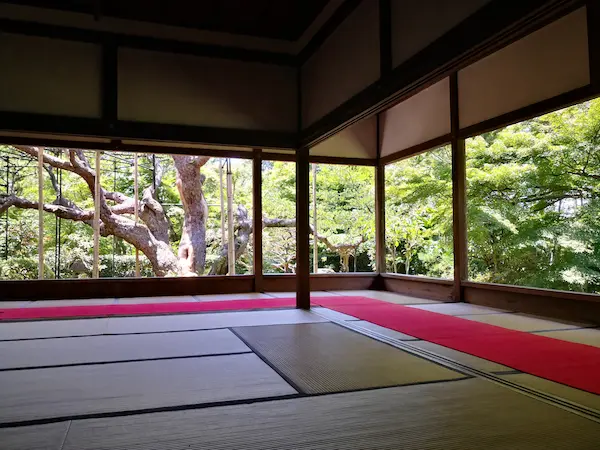Tag: blood ceiling
What is blood ceilling
Just before the Battle of Sekigahara in 1600, Tokugawa Ieyasu ordered Torii Mototada to defend Fushimi Castle and left Kyoto. However, Mitsunari Ishida raised an army to take advantage of Ieyasu’s absence, and an army of about 40,000 men, including Hideaki Kobayakawa and Yoshihiro Shimazu, attacked the castle in full force. Fushimi Castle fell after a mere 1,800 men fought back.
Mototada and the surviving soldiers committed suicide in the corridors of Fushimi Castle. Later, floorboards with traces of blood from this event were used for the ceiling of a temple in Kyoto as a memorial to the heroes. This is the blood ceiling.
After more than 400 years, the traces of blood are difficult to see. However, if you look closely, you can see hands, feet, and even faces.
-

Genko-an Temple
Genko-an is not just a place of beauty but a journey through history, culture, and spiritual reflection. It’s a must-visit for anyone seeking peace and understanding in the heart of Kyoto. Temple’s official WEB site Discover Genko-an Temple in Kyoto: A Haven of Serenity and Tradition Introduction to Genko-an Genko-an, located in Kyoto, is famed…
-

Hosenin Temple (宝泉院) in Ohara
Hosenin temple is a temple of the Tendai sect in Ohara. Together with the Jikkoin Temple, it is a sub-temple of the Shorinin Temple. As visitors enter through the temple gate, they see before them a temple’s symbol, a 700-year-old goyomatsu (five-leaf pine tree). Because it is a large and precious goyomatsu tree, “Hosenin no…
-

Yogen-in (養源院)
Yogen-in Temple is located near Sanjusangendo and Hojuji Temple. Yogen-in Temple has a blood ceiling and cedar door and sliding door paintings by Sotatsu Tawaraya that are a must-see. Unfortunately, you cannot take photos inside the temple. The following is a summarized quote from the history of the temple. Temple’s official WEB site Yododono, the…